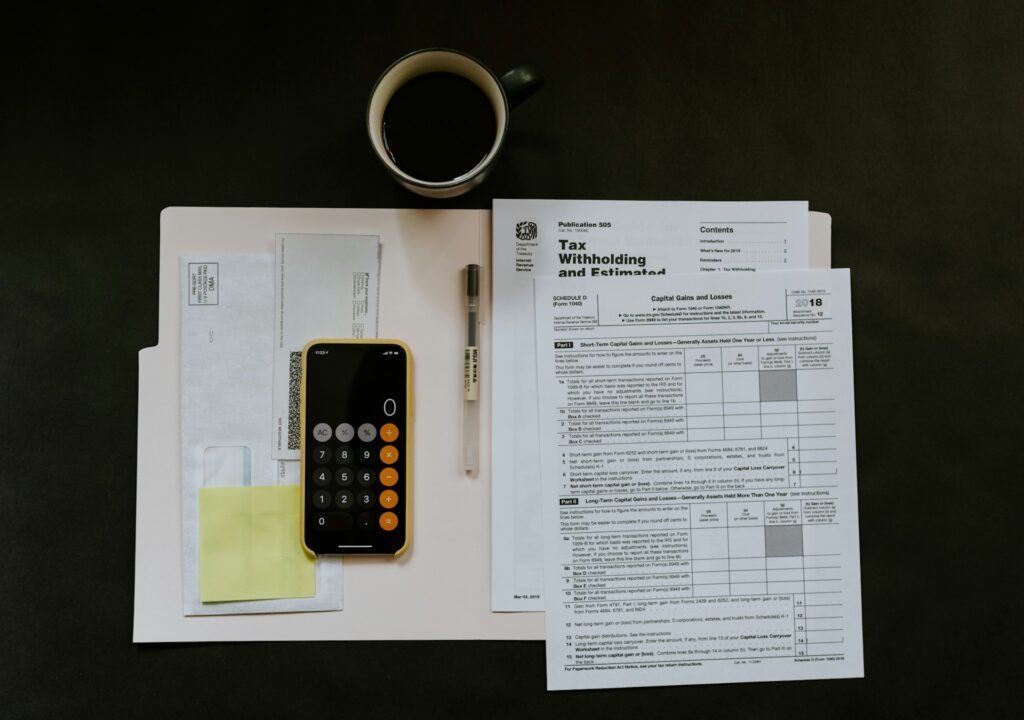- Tax planning isn’t just for the last minute. A year-round strategy reduces your tax bill and avoids costly surprises.
- Knowing your tax bracket and planning ahead by timing income, deductions, and contributions can save you a lot of money.
- Use tax-advantaged accounts—like IRAs, 401(k)s, HSAs, and 529 plans—wisely.
- Explore advanced strategies when planning taxes—charitable giving, tax-loss harvesting, and asset location can further optimize your wealth strategy.
Tax season often feels like a yearly scramble. Anxiety steadily rises as April nears, and many people just want to file and be done with it when the time comes. But if you knew that waiting until tax season could mean leaving money on the table, potentially thousands of dollars per year, would you do things differently? Highly likely.
Tax laws are also in constant flux, as seen with major updates like the Tax Cuts and Jobs Act (TCJA) and the SECURE Act 2.0.
This is precisely why year-round individual tax planning is key. It helps you avoid unpleasant surprises and puts you in a better position to take advantage of new opportunities. And let’s not forget the priceless benefit of peace of mind.
Seeking guidance from private wealth management advisors like WealthArch Investment Services is a wise move when planning your tax strategy. Below, we share the tax planning tips we give our clients to help them keep more of what they earn.
1. Think Ahead of Your Tax Bracket
Let’s start with the fundamentals, the first of which is planning according to your current and future tax bracket.
The U.S. has a progressive tax system, which means your income is taxed at different rates depending on how much you earn. This is not news, but where many go wrong is assuming their bracket doesn’t change as much as it actually does.
If you expect your income to rise or drop in the near future—maybe you’re job hunting, starting a new business, or nearing retirement—you should adjust your tax planning strategy to match.
For example, if you’re in a lower tax bracket now, consider converting your traditional Individual Retirement Account (IRA) to a Roth IRA since your tax bill is not as high, and enjoy tax-free earnings and withdrawals in retirement. This brings up the next point…
2. Time Income and Deductions Wisely
One of the most effective ways to optimize individual tax planning is to time your income and deductions to your advantage. Let’s say you’re having a high-income year due to a bonus, stock sale, or freelance surge. Deferring your income to the following year, if feasible, might drop you to a lower tax bracket and reduce your tax burden.
On the other hand, if you expect to earn more next year, you could plan your tax strategy such that it increases deductible expenses now, like contributing to charity or making business purchases, so you can claim the write-offs when they provide the biggest benefit.
3. Fund Tax-Advantaged Accounts Strategically
Speaking of tax deferral, if you haven’t been maxing out your 401(k), IRA, or Health Savings Account (HSA), you could be missing out on saving a tidy sum come tax season.
Traditional 401(k)s and IRAs provide immediate tax benefits by reducing your taxable income for the year, potentially lowering your tax bracket and overall liability. Roth IRAs don’t offer an up-front deduction, but they grow tax-free and allow tax-free withdrawals in retirement. This is a good long-term tax strategy plan as you’ll likely retire at a higher tax bracket.
HSAs offer a unique triple tax advantage: contributions are tax-deductible, your savings grow tax-free, and withdrawals for qualified medical expenses are also not taxed. And if you have children, consider saving for their education using 529 plans or Coverdell Education Savings Accounts (ESAs) to take advantage of tax-free growth and withdrawals for qualified education expenses.
Remember that these accounts aren’t “set-it-and-forget-it”. Contributions limits are regularly adjusted for inflation, so it’s wise to review them annually.
4. Asset Location, Not Allocation
Most people focus on asset allocation (your mix of stocks, bonds, etc.), but where you put your assets is just as important when planning a tax strategy. This means being intentional about where you hold certain investments to reduce the taxes they accrue.
Here are some tax planning tips on asset location:
- Put tax-efficient investments, like index funds or ETFs, in taxable brokerage accounts because they generate fewer capital gains distributions during the year—they won’t drive up your annual tax bill too much.
- Tax-inefficient assets, like REITs or actively managed funds, are better off in tax-advantaged accounts like IRAs or 401(k)s because they tend to kick off frequent taxable income.
5. Harvest Investment Losses
Another often overlooked tax planning strategy is turning investment losses into tax savings. Known as tax-loss harvesting, this move involves selling underperforming investments at a loss to offset gains you’ve realized elsewhere.
For example, if you sold stock for a $5,000 profit, you could sell another investment with a $5,000 loss to cancel out the taxable gain.
If your losses exceed your gains, you can use up to $3,000 of net losses per year to offset your ordinary income. Any remaining losses can be carried over to future years.
$3,000 might not seem like much for a high earner, but the rollover amounts add up when combined with other individual tax planning approaches.
Your Tax Strategy Should Work All Year Long
Sound financial planning includes managing your tax strategy deliberately, just like you do your regular spending and investments. The right moves today will lower your tax bill, reduce surprises, and boost your long-term financial growth.
At WealthArch, we specialize in leveraging tax rules to protect and build your wealth throughout the year, not just during tax season. We also provide complimentary portfolio guidance on 401(k)s, ETFs, and mutual funds to all our clients.
Schedule a free consultation to learn more about how our team of advisors can help you with planning your tax strategy today.







